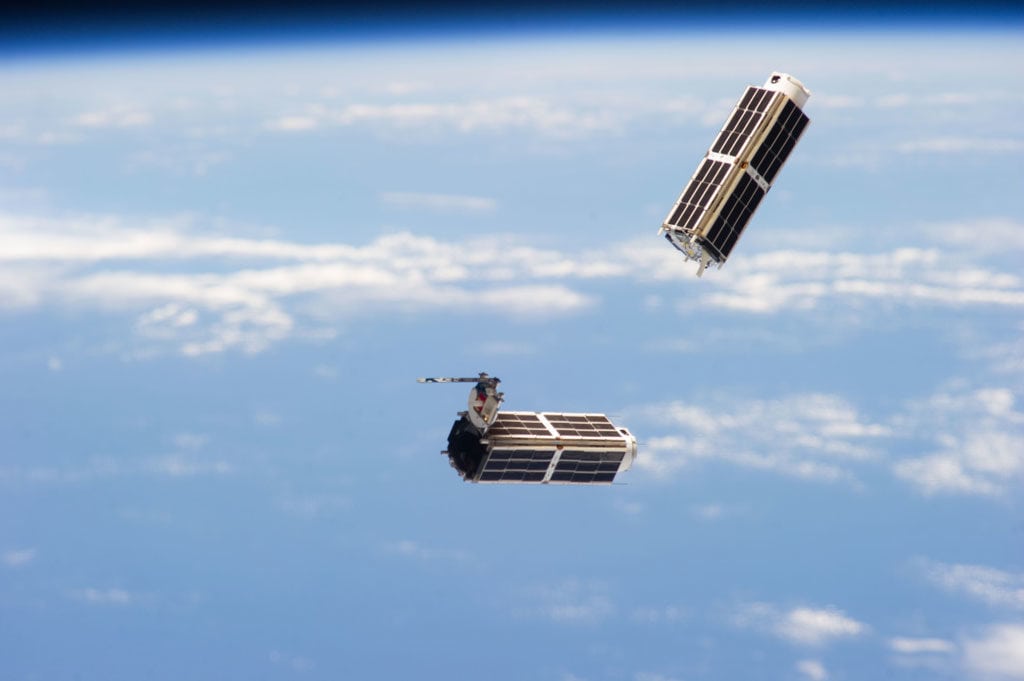Latest News

Smallsats deployed from ISS NASA. Photo: NASA
Ten years ago, our industry began to rethink the utility of the platform that had kicked off the space age, positing that smallsats offered untold commercial and scientific potential. While ideas of how to leverage smallsats emerged in volume, success stories have been few and far between.
No matter how compelling their business case, a key challenge for would-be operators was a sparse supporting ecosystem of suppliers. The existing value chain – from manufacturing and launch through to operations support and downstream analytics – was not tailored to the unique requirements and price points that smallsats needed to thrive. New providers and solutions soon started to emerge, but without competitive suppliers across the full value chain operators were soon beset by delays, higher costs, and the trade-off to do more in-house. Assessing the industry today, each layer in the value chain has risen to the challenge, with new capabilities, approaches, and price points present now that were only a dream a decade ago.
Cultivating a Value Chain
Early smallsat operators often had little recourse but to build platforms in house — a path that not only extended time to market to refine designs and build production facilities, but also added to the Research and Development (R&D) budget and could distract the team from the core objective. As dedicated smallsat manufacturers gained expertise and diversified product offerings from single components to full platforms, the trade-offs to build internally transitioned to more often favor external providers. Commercial Off-the-Shelf (COTS) subsystems have likewise improved, especially in key capability enabling areas like Altitude Determination and Control (ADCS), solar panels and batteries (e.g. duty cycles), heat dissipation (e.g. on-board processing), propulsion (e.g. collision avoidance), etc., that are critical to closing the business case for novel applications.
Launch has been vilified more than any other element of the smallsat ecosystem, with common complaints surrounding not only cost but availability, orbits, and timelines. Today’s market supports both more rideshares, such as Spaceflight Industries’ SSO-A launch last December, and added flexibility of International Space Station (ISS) deployments, such as via Cygnus deployments approximately 100 kilometers (km) above the station. The number of dedicated smallsat launcher projects in development exceeds 100, and while maiden launches suffered multi-year delays, the first have now started to fly normal operations. Access to launch is by no means ideal, but launch is no longer the restraint many operators experienced even one year ago.
In the industry’s nascence, operators largely constrained themselves to using low rate UHF systems or dedicated precious capital and human resources to build out distributed ground assets. What began years ago as an idea to build out standardized ground networks in S- and X-band to facilitate flexible and scalable access to downlink is now a reality, with both incumbent and start-up players delivering services from globally distributed networks. Ground service providers are also seeking to anticipate market needs and build capabilities today that operators will need to thrive tomorrow: Ka-band, optical, and in-space relay networks.
Downstream analytics services have continued to emerge and diversify the space-based data sources leveraged to create their products as well as broaden the end-user markets addressed. This provides operators with more ready markets for data, reducing the customer discovery and development process that can easily become a stumbling block for technical-focused start-ups collecting new types of data. And as more operators move past demo stages, opportunities for fusing distinct space-based data sources further opens new revenue streams and creates added value for users.
Finally, the smallsat industry has come together to advocate for the regulatory evolution required to facilitate growth. New entities such as the SmallSat Alliance have lobbied for streamlined the Federal Communications Commission (FCC) and National Oceanic and Atmospheric Administration (NOAA) licenses in the U.S., and similar organizations are emerging elsewhere around the world.
Delivering on Market Potential
This cultivation of a diverse ecosystem surrounding smallsats has been energizing to witness. Yet the multitude of incumbent players and start-ups who have developed new products and services can only survive if smallsat operators pick up these pieces and use them to deliver a viable product: operators are the lynchpin to industry success. Delays in operations and delays in customer development must be overcome, revenue must be generated, and the pathway to Return on Investment (ROI) must be clarified. The industry needs today’s emerging operators and tomorrow’s innovative entrepreneurs to fulfill their business plans and become sustainable companies, delivering the next step for our interconnected industry to thrive and drive value across the globe.
The incubation period for the smallsat industry is ending, and in one way or another the coming one to two years will tell whether the early innovations and drivers of the smallsat resurgence can carry it into a renaissance. With all the pieces in place for success, I look forward to what we will achieve.

Carolyn Belle engages in space industry growth and diversification, with expertise in the market dynamics of emerging satellite applications, in-space servicing, and the creation of diversified space architectures. She currently supports communications for smallsat constellations and beyond in her role at KSAT.
Get the latest Via Satellite news!
Subscribe Now